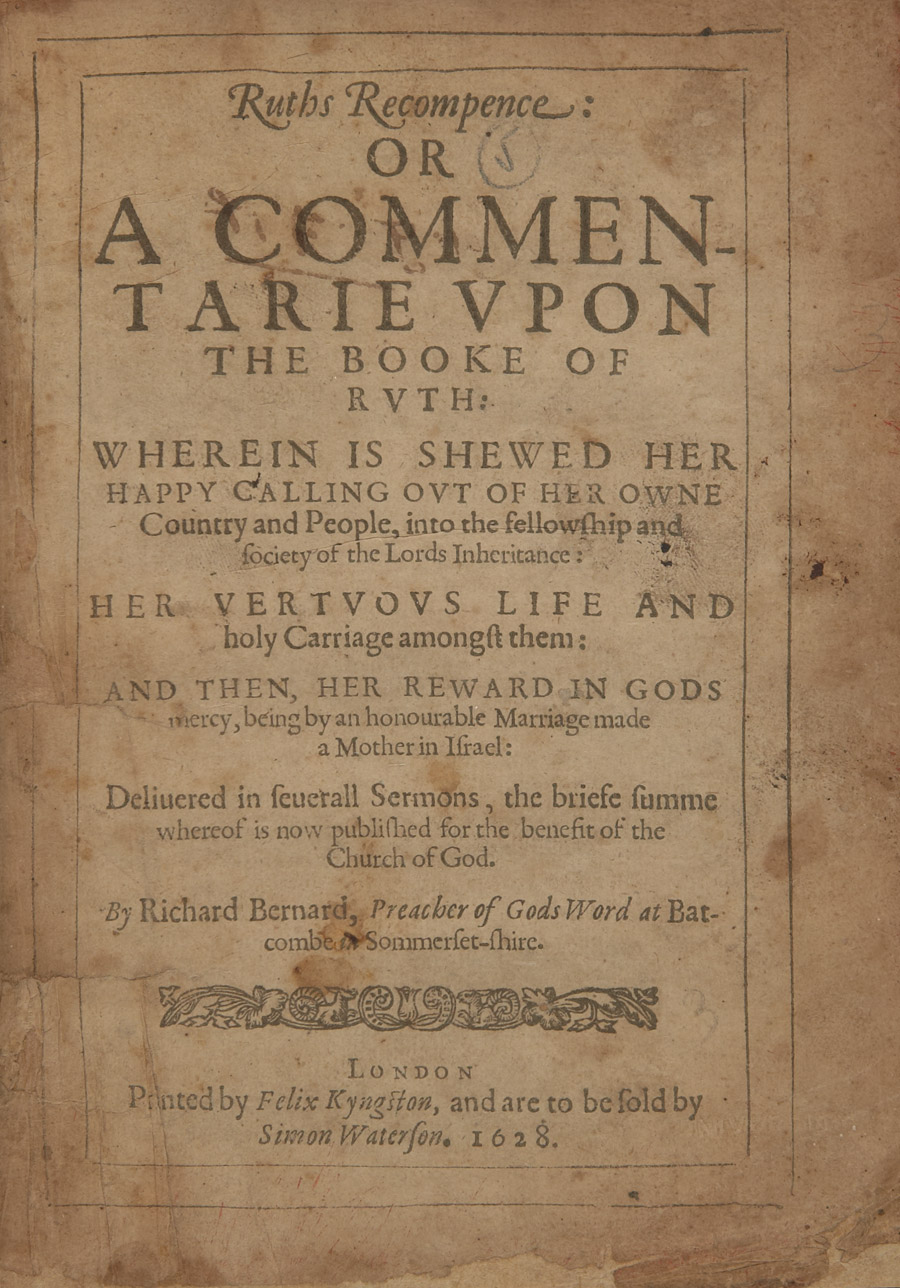Richard Bernard (1568-1641) was a moderate Puritan clergyman. Though he flirted at times with separatism, he spent most of his career preaching and practicing a kind of nonconformity within the established English church. He was a prolific writer, publishing more than thirty tracts, treatises, and collected sermons during his lifetime, many of which went through several more printings after his death. His most influential work, a handbook for ministers entitled The Faithfull Shepheard and his Practice, was published first in 1607 and then again, in revised form, in 1621. His allegorical work, The Isle of Man, went through seventeen separate editions between the time of its first publication in 1627 and the end of the eighteenth century. It is believed to have exercised significant influence on, and served as an important precedent for, John Bunyan's allegorical conversion narrative, The Holy War (1682).
Bernard had several connections with the recently established English colonies in North America, as well. During his time in Worksop, Nottinghamshire, he associated with William Brewster and John Robinson, separatists who were involved in the voyage of the Mayflower. His daughter Mary married Roger Williams in 1629 and emigrated with him to New England in 1631, where they eventually founded the colony of Rhode Island.
Ruths Recompense is a verse-by-verse commentary on the book of Ruth, collated from sermons Bernard composed and delivered over several years. Like many of his contemporaries, and indeed like Jewish and Christian readers through the centuries, Bernard regarded Ruth as a paradigmatic convert, exemplary in her self-sacrificing faith and commitment to her mother-in-law, Naomi, and to the people of Israel. What made Ruth especially important to Christian readers, of course, was her role within the Davidic line and, therefore, her function as a living ancestor of Christ. Both through her body and through her faith, Ruth's conversion paved the way for the salvation of the Gentiles. In so doing, however, she also became a critical figure within Christian theories of supersession and the increasingly intense arguments in the 1620s about whether English Protestants should expect, and work for, the "calling of the Jews," their recovery as God's (first) chosen people.
Bernard dedicated the volume to Lady Frances, the Countess Dowager of Warwick, who had been his patron when he was a young and promising scholar, paying his way at Christ's College, Cambridge. Christ's happened to be the college where the most influential Puritan theorist of conversion, William Perkins, served as fellow while Bernard was a student there. Bernard's reading of Ruth exhibits a significant influence by Perkins, who had developed a morphology of conversion, an approach to conversion as a progression through various inner states of despair and reassurance. In his discussion of Ruth's conversion it is possible to see Bernard applying Perkins's ordo salutis, "order of salvation," which was noteworthy for its departure from the rigidly Calvinist idea that man's will could play no role in his conversion. Bernard celebrates both Ruth's "calling out of her own people" and her voluntary choice to live a "virtuous life," in which she exhibited the hallmarks of salvation by being joined "together with members of Christ's mystical body."
